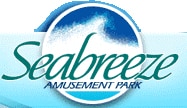By Timothy Gardner
WASHINGTON (Reuters) – U.S. research is advancing on the potential to change fuel for nuclear reactors on Navy submarines and aircraft carriers from bomb-grade uranium to a safer option, documents showed Wednesday, even as the program’s funding is at risk in Congress.
In order to lower proliferation risks of keeping stockpiles of highly-enriched uranium, the U.S. government has been exploring since 2018 how to use low-enriched fuel that cannot be used as fissile material in weapons.
The U.S. research program progressed from a planning phase into an “iterative experimental campaign phase” in fiscal year 2021 and early findings represent progress in what could be a 20-to 25- year design effort, said a report to Congress last year from the National Nuclear Security Administration (NNSA).
The report, seen by Reuters, had not been revealed previously.
The issue of highly-enriched fuel in naval vessels is heightened by the $245 billion AUKUS defense technology partnership with Australia and Britain that provides for the sale of U.S. nuclear-powered submarines and sharing of nuclear-propulsion technology with Australia in response to China’s growing power in the Indo-Pacific.
Non-proliferation experts say sending submarines to Australia that use highly-enriched uranium could set a precedent for other countries to use the fuel.
The low-enriched uranium fuel program seeks to meet “the stringent requirements for the power output, compact size, and long-life the U.S. Navy requires,” said the NNSA report.
The document concluded that “initial activities are the first steps on a long, costly path to fuel development and success is not assured.”
It also mentioned a 2016 report’s findings that it could take over $1 billion to develop alternative fuel. The earlier report also said low-enriched fuel would negatively impact reactor endurance and ship costs and operational effectiveness.
The 2022 report warned the costs could detract from higher-priority non-proliferation and naval propulsion research and development activities.
Still, head of the NNSA Jill Hruby said in the document she was pleased with progress the program has made “in this technically challenging effort.”
NNSA did not immediately respond to questions about the documents.
Congress has given the program $100 million since 2016 but funding is in question after the subcommittee in the Republican-controlled House of Representatives this year voted to stop it. The Senate has approved funding and the two chambers are expected to work together to figure out any funding.
Alan Kuperman, a professor at the University of Texas at Austin and coordinator at the Nuclear Proliferation Prevention Project, has pushed the government to embrace low-enriched uranium for Navy vessels and obtained the documents from NNSA.
“These documents clarify three things for the first time: the program is vital to preventing the spread of nuclear weapons, is making rapid progress, and will be implemented only if it can preserve the performance of U.S. Navy vessels,” Kuperman said.
He said the potential $1 billion cost for the fuel was small compared to trillions spent on the Navy’s nuclear fleet.
The Defense Department did not immediately respond to a request for comment about the program.
(Reporting by Timothy Gardner; Editing by Jamie Freed)
Brought to you by www.srnnews.com





















